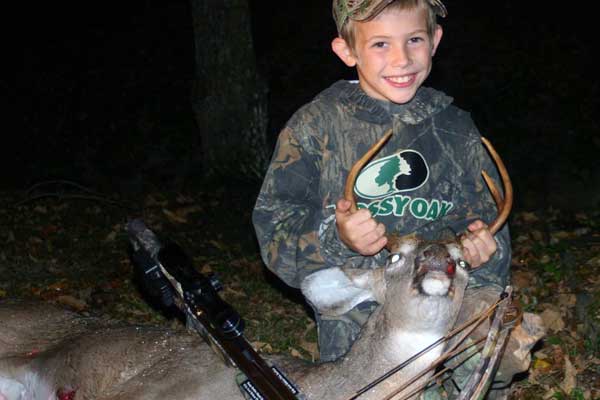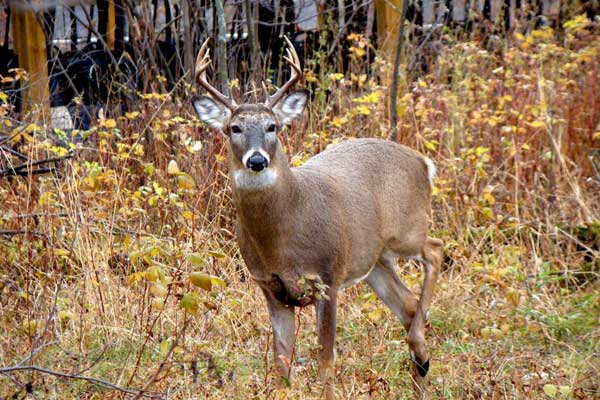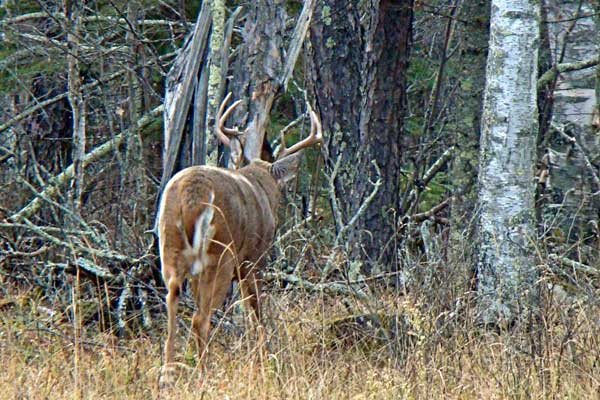LAST UPDATED: May 1st, 2015
For the past two-plus decades many of my associates and I have been involved in a struggle to create a crossbow hunting season in every state of the Union for everyone that would choose to use one; unequivocally a formidable task, but one that we have dedicated our lives to the pursuit of. The underlying reasoning for that conviction and dedication is that hunters all across America should have the freedom of choice to use whatever weapon they wish as long as it is a viable option for the game they pursue.
In our particular arena, it is the crossbow; and with 50% of the states allowing full inclusion of the crossbow during the archery season, one would think that the remaining half would finally get it and give the majority of the hunters what they want. However, that is not how it works as there are still those who believe that everyone should hunt the way they do or not be allowed in the woods. Very sad, but nevertheless, very true.
But the hunting tool of choice is not the only arena that a minority tries to impose their standards upon the vast majority of hunters. Another such battlefield is the size of the buck you shoot. There are those that would limit the antler size of the buck that you permitted to take in the name of trophy deer management.
Most of the hunters I know (and I know quite a few hunters by the way) are like me, just ordinary, every-day hunters whose greatest pleasure is eating the animals that they take. They are definitely not in the class of hunters that won’t settle for any animal that measures under 150 Boone and Crockett inches. It would seem, as with anything else in life, that average hunters have a multitude of standards, well below that 150″ mark.
Tell this little guy that he shouldn’t have shot this buck because it’s too small. Right now he thinks that is the biggest buck in the world… and in his world it is.
There are those that are grateful just to be able to get a shot at a whitetail and will happily settle for anything covered in deer hide; especially those hunters that are new to the sport or those that hunt with physical limitations due to injury, illness or advancing age. Who could be resentful of a ten-year old, newbie hunter, boy or girl, taking a button buck or a spike for his or her first whitetail trophy. All I would be capable of doing under those circumstances would be reveling in their triumph and applying a great deal of heartfelt back patting.
Some hunters have their sights set on nothing other than a nice fat doe that will serve as a premium freezer stuffer. Perhaps they have taken a big buck before or had a bite of someone else’s and were put off by a tough cut of meat or one that had a strong, gamey taste. Consequently, for whatever their reason, their chosen trophy deer is that delectable doe, one that is just the right age to provide edible cuisine throughout the long winter ahead.
Personally I wouldn’t shoot this buck unless I was armed with a camera (which I was), others would be thankful for the chance to put an arrow in it
When it comes to bucks however, most of us average hunters have a wide variety of standards as to what is an acceptable buck. These standards, I believe, are most often determined by the amount of time one has spent during his or her lifetime chasing the wily whitetail, not always of course, but normally. In other words the longer one hunts and the more deer they have taken, the higher their personal standards may become. Many hunters that I know have hunted for decades, killed a mountain of deer and still their favorite buck is the fattened yearling. Their logic goes as follows: A yearling buck is as large as a fully matured doe and its flesh is as tender as it gets, second only to the meat of a fawn. And of course this logic is absolutely correct and it defines their “trophy meat animal” perfectly.
Some hunters will take a buck of any size and be delighted with it, just because it is a buck. Others have self-imposed limitations, for example they will not consider taking a buck unless it is 2 or 3 and a half years old depending on the size and shape of its headgear. And then, of course, we have the trophy hunters that want their buck to be really big or they will not consider it at all.
Just about every hunter and I think the majority will agree, will be shooting if a really big buck should surprise them on a stand, but quite honestly, many of those opportunities are blown because the average hunter falls apart, both physically and emotionally when a really big buck appears on the scene. Adrenaline, trembling and even mental panicking (often called “Buck Fever”) prevent the excited hunter from closing the deal on the old warhorse. Consequently education is all that is realized from these close encounters. The buck runs away more educated about the predator that is trying to kill it and the hunter, hopefully, is more educated about whitetail deer for his or her next encounter with a big buck.
Most of the folks I hunt with would not think twice about taking a stab at this buck (not from this angle with a bow of course).
Average hunters, like the folks I hunt with mostly, have what I would classify as good and very fair standards when afield in pursuit of whitetails. Generally, they will pass on does, fawns and young bucks waiting for a shooter, at least until the end of season when filling the tag to fill the freezer becomes a crucial grocery issue. Now that shooter buck does not have to be a Boone and Crockett buck, and age is not really a consideration either. There is not a hunter in the land that can tell you the precise age of a mature buck by looking at it anyhow, at least not until its teeth can be studied to determine exactly how old it is. The hunter can make estimates, but truly does not know the age until the lab work is done.
More importantly to us average hunters is the uniqueness of the rack itself. If, for whatever reason, we deem it to be a trophy then its “game on”! It could be chosen for its uniformity or its deformity; or just the overall size or configuration of the rack, but whatever the reason, to us it is a trophy worthy of taking up space on our wall.
But to more and more of the hunters I discuss this subject with, I am finding that perhaps the most important factor in determining trophy value is the duel itself; the final moments that transpire in the contest between man and beast that determine the victor in the primeval struggle between the hunted and the hunter. In other words, a lot of bucks are taken because the hunter truly feels like he has earned that buck by besting it. And in that hunter’s mind, the final moments before he made that fatal shot that brought the quarry to the ground is what determines whether or not that particular animal is a justifiable trophy. In the end it is all about the duel.
Busted! Now the challenge is to get the shot off. Sometimes it is just about the challenge.
A buck that was called in from a great distance, or one that was taken after a very long nerve-racking stare down or perhaps one that was taken after weeks or even months of intense pursuit, to many is the true reward, regardless of the number if inches in its rack. The genuine value of the prize is in the hunt itself, not just because of the size of the rack.
Now you must understand that I, like everyone else, have my own set of opinions and right or wrong, they are mine and mine alone. But one opinion that I own up to and tout is that each man has a right to their own opinion, ideas or standards of what a hunting trophy is to them. And I believe that each and every hunter is entitled to their very own personal guidelines and are perfectly within their rights to exercise them. So let’s make a deal… you can have your trophy standards and I will have mine, and we will cheerfully promise to leave each other’s standards alone.
Until next time, please take care, be well and may God bless you.










